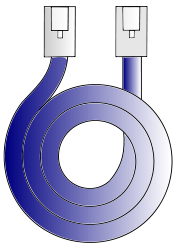I have earlier posted about Audio trends and snake oil. What annoyed then and still today in marketing and media that too often today then talking on hi-fi, science is replaced by bizarre belief structures and marketing fluff. It seems that there too many snake oil rubbish products marketed in the name of hifi. It is irritating to watch the stupid people in the world be fooled with things like exotic materials, directional cables, thousand dollar IEC power cables, and all that rubbish. “If you pay ridiculous money for these cable you will hear a difference, but don’t expect your friends to”
I can agree that in analogue interconnect cables there are few cases where better cables can result in cleaner sound. And there are very many cases where there is no objectively noticeable difference.
In digital interconnect cables story is different than on those analogue interconnect cables. Generally in digital interconnect cables the communication either works, does not work or sometimes work unreliably. The digital cable either gets the bits to the other end or not, it does not magically alter the sound that goes through the cable.
But this digital interconnect cables characteristics has not stopped hifi marketers to make very expensive cable products that are marketed with unbelievable claims. Ethernet has come to audio world, so there are hifi audiophile Ethernet cables that do not make sense to me. With Ethernet the data either gets through the cable without any changes to it, or it does not get through at all. Ethernet has checksum on every data packets to detect for any errors (which are rare) in the transmission and all the packets that have data changed in any any way are discarded. So Ethernet cable can not not magically slightly alter the digital sound that goes through the cable.
Here are links to two articles on such expensive audiophile Ethernet cables:
Is streaming cable more or less expensive than $1000 audiophile snake-oil ethernet cable ?
https://audiobacon.net/2019/11/02/the-jcat-signature-lan-a-1000-ethernet-cable/
Gallery: We tear apart a $340 audiophile Ethernet cable and look inside
https://arstechnica.com/gadgets/2015/07/gallery-we-tear-apart-a-340-audiophile-ethernet-cable-and-look-inside/
Apart from the absurdly high price tag and more mechanically robust connectors, I see nothing special on those cables for carrying the data signal. I suppose those does look quite attractive to some users and this makes them willing to pay the high price.
Despite the fact that some people desperately want there to be audiophile Ethernet cables, there simply is no such thing. The IEEE standards do not include a superset of specifications that make a regular Cat-7 cable into an “audiophile” Cat-7 cable. If you still believe those “audiophile Ethernet” cables sounding better, please inform yourself how an Ethernet and Ethernet cable works.

161 Comments
Tomi Engdahl says:
Just… beyond me. I’m a double Cisco CCIE and a master of electronics…
https://www.alpha-audio.net/background/the-absolute-and-ultimate-guide-to-streaming-audio-network-optimization/?fbclid=IwZXh0bgNhZW0CMTEAAR1k8YdPlF_tgkIpTH_Mv7E6ypaEHg1Fh5ceu9PT2vtmKnCAY82mq6f_eIg_aem_2XBuMPPjpQyT9UaRHBr-sg#comment-28482
Tomi Engdahl says:
They at least kinda built something.
There are worse examples like an ethernet filter that snaps on the end of an ethernet cable.
This guy is insulting to his own oscilloscopes.
https://youtu.be/c6lZFN-LW-U?si=qYpcIuJuvtCNbKsW
Tomi Engdahl says:
https://www.furutech.com/2024/11/27/24563/
Directional Ethernet cable for optimal sound!?!?!?!?
“Important caution for cable direction:
* This LAN Cables is directional for optimal sound reproduction. The cable will not be damaged or damage equipment if connected in the wrong direction, but audio signal will not be optimal. The direction marked by the arrow is the input (source) side. Check the arrow markings on the connector before connecting.”
Tomi Engdahl says:
Ethernet data signal is already galvanically isolated on both devices with transformers. When using shielded Ethernet cable the shield will make a direct connection that can sometimes lead to ground loop problems that can be solved by using signal isolator or unshielded Ethernet cable.
Tomi Engdahl says:
Let the laws of physics guide you, not the myths and snakeoil of audiophoolery.
Tomi Engdahl says:
Audiophiles Keep Failing the Test That Should End the Amplifier Debate
https://www.headphonesty.com/2025/03/audiophiles-keep-failing-test-end-amplifier-debate/
Why do expensive amps keep selling even when blind tests prove they sound the same?
Dropping $2000 on a premium amplifier feels like it should transform your sound. Yet, when researchers test listeners under controlled conditions, most can’t identify which amp is which.
Tomi Engdahl says:
https://www.headphonesty.com/2025/05/songs-expose-headphones-midrange-problems/
Tomi Engdahl says:
I’m almost impressed. There’s Just enough smattering of accurate terms and facts to make this cable look good but all they actually said is “our cable gives better audio then a shit-tier eBay cable that has the kind of wiring faults you can pick up with a Fluke tester”
This is technically correct. If you have a faulty cable with loose connections that’s causing packet loss that is likely to affect sound quality in the form of stuttering due to packet retries
But a £3 ethernet cable from your local office supplies shop will also do everything this thing does.
Tomi Engdahl says:
Misinformation or Simple Test? – CAT5e vs CAT6a
https://m.youtube.com/watch?v=ygspiLW-HQ0
Passion and anger tend to be inversely proportional to knowledge and understanding